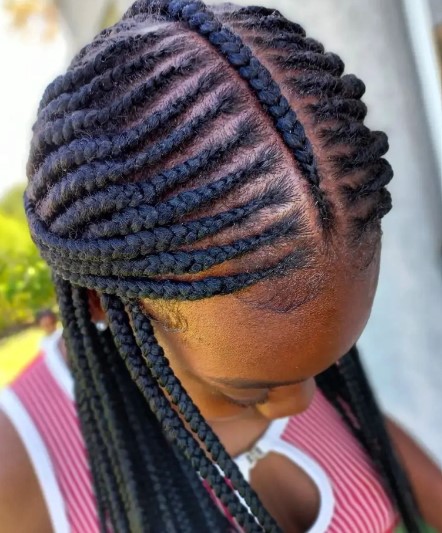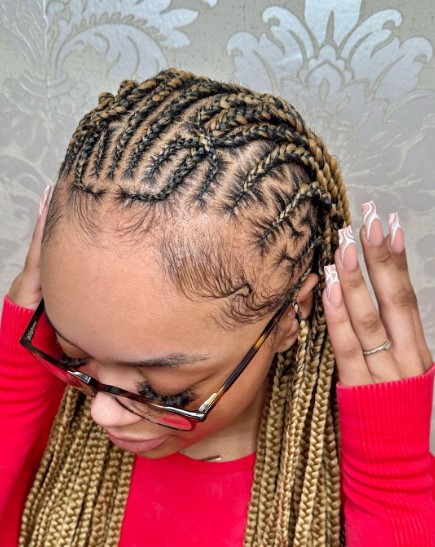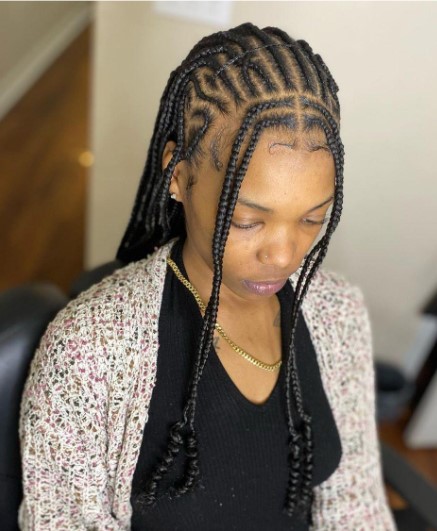Tips And Tricks For Trendy Tribal Braids
Tribal braids are not only gorgeous but also elegant and sleek due to their intricate details. Most people think tribal braids are hard to style, but they really aren’t.
This article provides tips for styling and caring for tribal braids. This trendy braid style is not for everyone, but if you can pull it off, you’ll never want to wear your hair any other way.
Table of Contents
What Are Tribal Braids?
Tribal braids refer to Fulani braids, Ghana braids, and Box braids. They originated in African culture and were used to display social, economic, and marital status. While box braids and Ghana braids are still trendy, Fulani braids seem to be the most popular form of tribal braids.
One of the best things about tribal-style braids is that they are the ideal protective hairstyle for natural hair. They can be worn casually or accessorized and accentuated with extensions, beads, cuffs, and rings. Fulani braids are typically styled using the cornrow or feed-in technique.
Another pro of Fulani braids is that they last for a long time. Generally, they last anywhere from three to five weeks and even as long as eight weeks if properly cared for. The best way to extend the life of Fulani braids is to wet them every day and pat them dry with a towel. This prevents them from losing their pattern and becoming loose or sloppy looking.
Depending on the style and amount of tribal braids, the cost typically ranges anywhere from $100 to $250. As well, prices may vary by stylist and salon.

Tips For Maintaining Tribal Braids
1.Get A Protein Treatment Prior to Braiding Your Hair
Before you braid your hair, getting at least two protein treatments is a good idea. This provides additional protection for your hair and scalp from the extra weight of the tribal braids.
2.Wash Your Fulani Braids To Protect Your Scalp
The general misconception of Fulani braids is that you should not wash your hair while you are wearing the braids. This is not the case. Washing your braids cleans your scalp while preventing excessive product buildup in your braids or scalp. Additionally, washing your tribal-style braids prevents dryness, irritation, etc.
The best way to wash your Fulani braids is to use a clarifying shampoo, as it rids the scalp of any foreign bodies. Use a spray bottle with a quality clarifying shampoo that has been diluted with water. Spray this directly on your scalp before massaging it into your scalp. Rinse completely before using a clarifying shampoo to condition your hair in the same manner.
When finished, squeeze any excess water out of your braids with a microfiber towel. It is best to air dry your hair, but you can blow dry it. The key is to allow your hair to completely dry, as this prevents the growth of mildew and other microorganisms.

3.Keep Your Scalp Moisturized
As with any protective hairstyle, keeping your hair and scalp hydrated is essential. Braided hairstyles tend to cause the scalp to become exposed, which often results in a dry, flaky, and irritated scalp. The best way to prevent these issues is to keep your scalp hydrated. Simply fill a spray bottle with water and infuse a few drops of tea tree oil or castor oil. Spritz your scalp generously with this spray at least twice a week to fully hydrate your tribal braids.
4.Protect Tribal Braids When Sleeping
One of the best ways to maintain any protective hairstyle is to wrap it in a headscarf, bonnet, satin, or silk scarf every night before you go to bed. Sleeping without covering your tribal braids causes them to become dull, dry, and frizzy. Additionally, sleeping on a silk or satin pillowcase protects your natural hair.
5.Redo The Edges and Work Through Tangles To Prolong The Life Of Your Braids
In order to prolong the life of your tribal braids, redo the edges one time every four weeks using a lightweight oil. As well, use a wide tooth comb to work through any tangles. Use your fingers to work through smaller knots. This also freshens up the braids so they look healthy and shiny.







